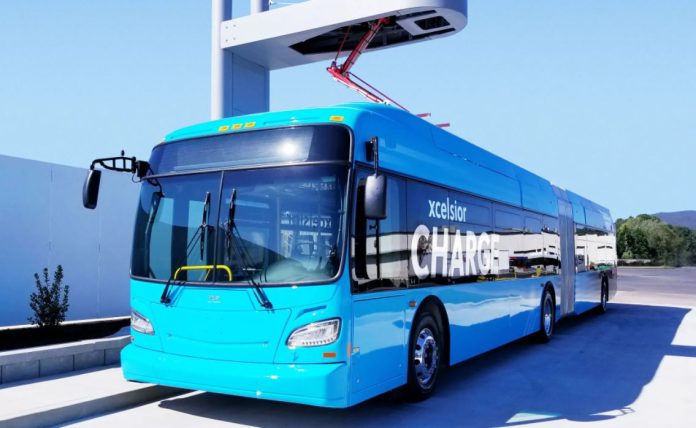The demand for electric buses in the country is beginning to skyrocket. After the super success of CESL’s mega 5,450 electric bus tender last month which received an enthusiastic response from the industry and realized a cost reduction of 40% over diesel and 34% over CNG buses, the government is planning to bring in multiple tenders for 50,000 buses in the next 1 year.
“We have state transport undertakings (STUs) at the back being incentivised and encouraged to come up with large orders for us. The bigger the lot size, the lower the price expectation,” said Mahua Acharya, MD, and CEO, of Convergence Energy Services Ltd (CESL), which is spearheading the process. “The next step is to take it a few notches higher to a scale that is roughly 10 times the grand challenge. The government is looking at 50,000 buses being deployed over the next 5-7 years and this time it will not be restricted to just the top 5-7 cities but to smaller towns across the country.”
While the government has been backing electric mobility for quite sometime, CESL’s parent body EESL’s attempts at cracking the electric car a few years back was a damp squib. In electric buses, however, the success of the grand challenge is seen as a tipping point. For one, the numbers aren’t small. For context, in fiscal 2022, around 30,000 buses were sold in the country. More importantly, though, the bids that were achieved show electric buses do not need subsidies to compete with diesel or CNG.
“The prices that we realised were 57% lower than diesel and 49% lower than CNG for the buses with subsidy. But even without that, they were lower by 41 and 34%, which means it is self-sustainable in a free market. That is the biggest takeaway for me,” Acharya said.
India’s largest commercial vehicle maker Tata Motors swept the tender with the lowest bid on all five categories. The lowest price discovered for a 12-meter bus was Rs. 43.49 per km, and for a 9-m bus is Rs. 39.21 per km. The tender was done under the operating expenses model so the bids include the maintenance of the buses as well as the cost of electricity for charging the buses. With a fixed contract of 12 years and assured run of 10 lakh kilometres per bus, it will end up saving an estimated 1.88 billion liters of fossil fuel and 3.31 million tonnes of CO2e that would otherwise be emitted from the tailpipe. The low prices would also save approximately INR 361 crores of subsidy under the FAME scheme.
Tata Motors alone however will not be the beneficiary. While it gets the lion’s share of 3,250 buses including all 1500 in Delhi and Bengaluru, Olectra and Volvo Eicher also get to supply 300 and 150 buses in Hyderabad and Surat respectively.
“There is good momentum for electric buses and with the new tenders, we need to build on it. We have demonstrated that it can sustain itself without subsidies. Beyond 2024 (when the FAME scheme ends) subsidies can be used in other segments that may need them more,” Acharya said.
The way forward would not be without its set of challenges. For one, with smaller cities coming into the fold, there cannot be one mega tender while the financial health of STUs is likely to vary in a big way. Clubbing them all together will not be easy.
“We are going to smaller cities where the infrastructure is uneven at best. Also, the counterpart (STUs) is riskier with a wide disparity in their respective financial health. So the numbers would be smaller,” Acharya admitted. “We will have to pace it so that the technology can develop. We want more international companies to come in and produce here and the best technology to be offered. It will not happen overnight so we have to be careful.”
The bigger issue could be elsewhere–supply. There are around 1.7 million buses in the country with 1.4 million with the government–either STUs or city administration. According to Acharya’s estimates, the 25 top STUs in the country have 40,000 buses between them that are old and need to be replaced. In all, around 91,000 new buses are needed for cities with a population between 2 and 4 million.
“If we go into even smaller cities, the numbers will be even higher. The problem is, we just don’t have enough buses,” she said.









